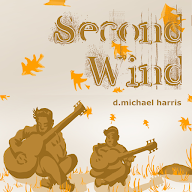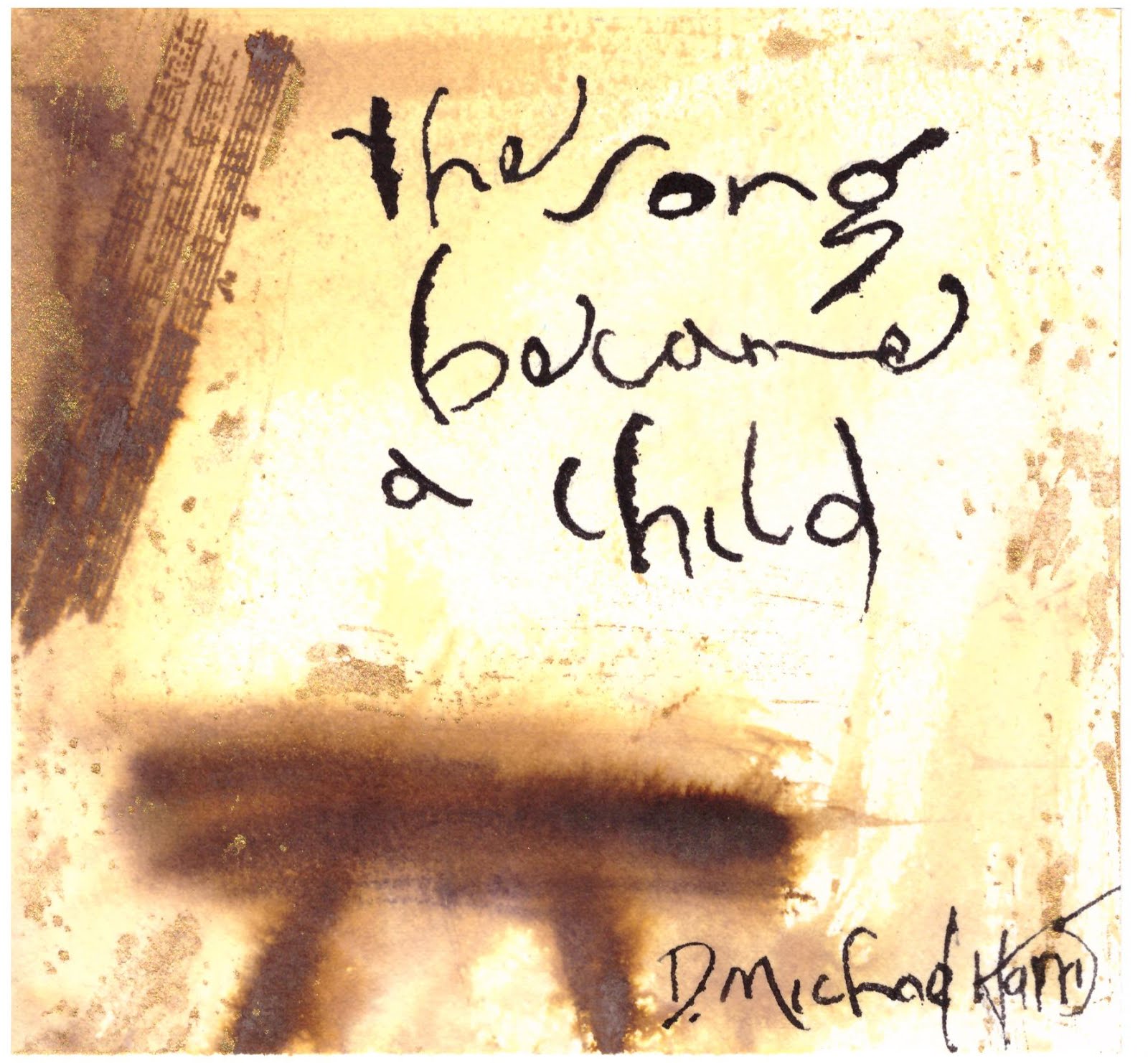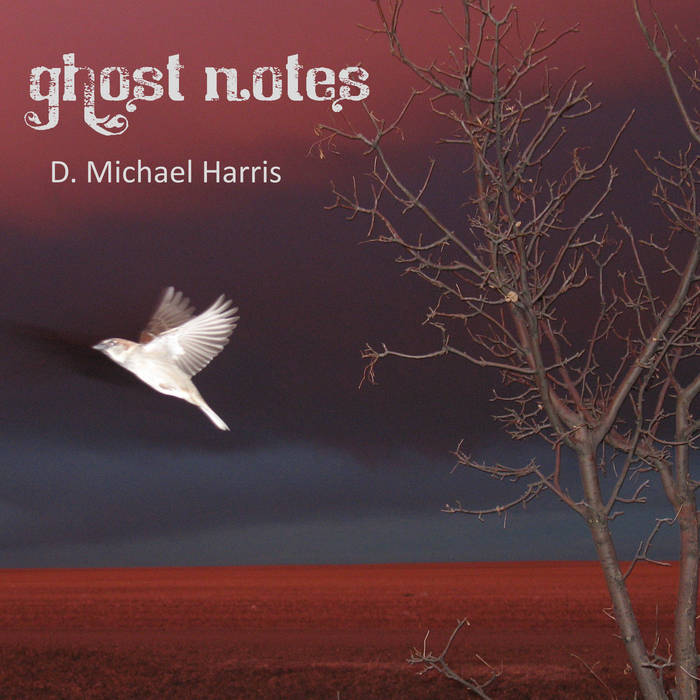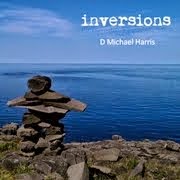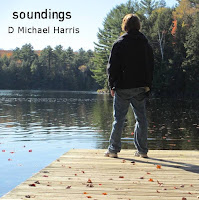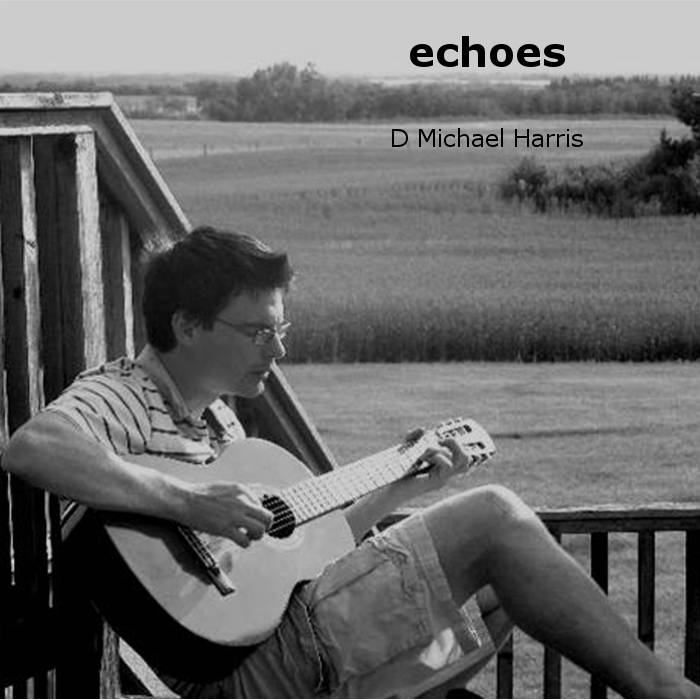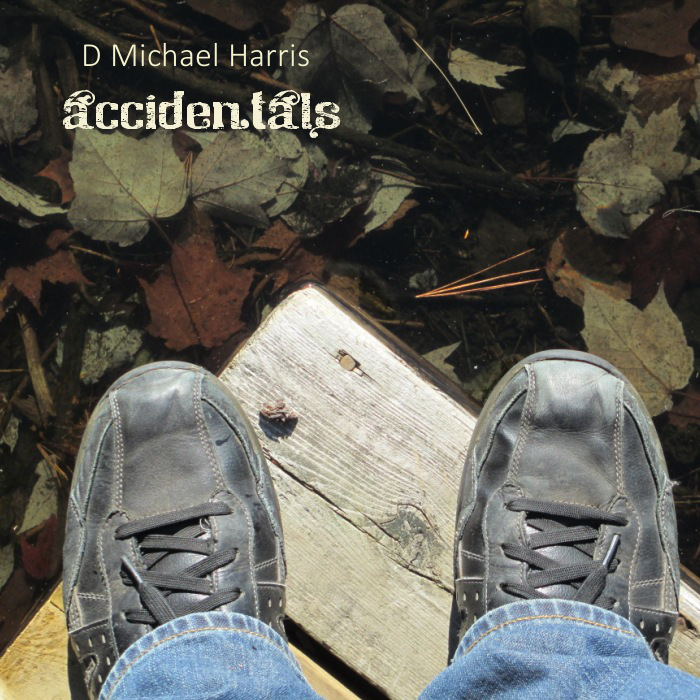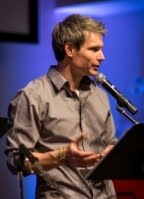Bring Back the Buffalo (VI): The Cross and the Buffalo Skull
 In Jesus and the Victory of God, N. T. Wright argues that somewhat controversial point that for First Century Jews, like those to whom Jesus of Nazareth first proclaimed the Gospel of the Kingdom of God, “sin” and “forgiveness” were tightly bound together with the Old Testament narrative of exile and return. His position—and in broad strokes, I tend to agree with it—is that in a Second Temple Jewish context like Jesus’, “forgiveness of sins” meant, in particular, forgiveness of the national sins of apostasy and corruption that were the cause of and explanation for the Roman oppression and national subjugation they suffered as a people. He makes the case that they would have interpreted their present situation in terms of the Babylonian exile described in their sacred scriptures, and they would have seen the Roman occupation as evidence that in some real sense the exile had not yet ended. Inasmuch as the Babylonian exile was a direct result of ancient Israel’s corporate, national sin, the “sin” that needed to be confessed and forgiven in Jesus’s Judea, in the mind of a first century Jew, was also corporate, and national in nature.
In Jesus and the Victory of God, N. T. Wright argues that somewhat controversial point that for First Century Jews, like those to whom Jesus of Nazareth first proclaimed the Gospel of the Kingdom of God, “sin” and “forgiveness” were tightly bound together with the Old Testament narrative of exile and return. His position—and in broad strokes, I tend to agree with it—is that in a Second Temple Jewish context like Jesus’, “forgiveness of sins” meant, in particular, forgiveness of the national sins of apostasy and corruption that were the cause of and explanation for the Roman oppression and national subjugation they suffered as a people. He makes the case that they would have interpreted their present situation in terms of the Babylonian exile described in their sacred scriptures, and they would have seen the Roman occupation as evidence that in some real sense the exile had not yet ended. Inasmuch as the Babylonian exile was a direct result of ancient Israel’s corporate, national sin, the “sin” that needed to be confessed and forgiven in Jesus’s Judea, in the mind of a first century Jew, was also corporate, and national in nature.
In N. T. Wright’s succinct assessment: “Forgiveness of sins is another way of saying ‘return from exile.’”
This position was controversial when N. T. Wright first articulated it, mostly because it seemed to undermine the widely-accepted, individualized gospel popular in modern day evangelicalism, that understands “sin” as our personal, individual moral failures and shortcomings that need we need to be “saved from” by making Jesus our “personal” Lord and savior. This popular-level understanding of the Gospel has little room for the idea of corporate sin, that needs to be confessed by a people, in order that corporate forgiveness, in some sense, might be proffered. And yet, in N. T. Wright’s reading of the New Testament, this was at the heart of the historical Jesus’s ministry and message.
He suggests, for instance, that when the gospels relate that the whole region of Judea was going out to the Jordan river, “confessing their sins” and being baptized by John, they were not confessing their individual sins, or even their personal sinfulness. They were “confessing” the fact that Israel was still, in a very real sense, suffering the realities of the exile, and that they were, in another very real sense, implicated in the national, historic sins that had resulted in this situation, and that they wanted the Lord to end the exile and heal their national life.
It's a poignant reframing of the story, though it doesn’t fit neatly on a 4-point Gospel Tract.
I’ve been thinking a lot lately about this idea lately, that for the historical Jesus, “forgiveness of sins” might be more about the healing of national, corporate sin than it is about individual absolution from personally-committed sins. It’s been especially helpful to me as I’ve processed my recent trip to Pelican Lake First Nations Reserve, where a delegation from our church participated in a Bring Back the Buffalo initiative with Loko Koa and Tearfund. As I’ve mentioned in previous posts, the goal of this initiative was to gift a First Nation community with a herd of buffalo, as a small step towards restitution and reconciliation.
Ever since I heard about this project, I found it deeply inspiring and profoundly moving; it becomes more so after you’ve done a bit of research into the horrific story of Canada’s systematic decimation of the buffalo herds that once roamed freely across the prairies, sustaining Indigenous communities and playing a central role in their culture. Throughout the 19th Century, the Canadian government actively encouraged the slaughter of millions of buffalo, both to clear space for settlers and agriculture, and to force the Indigenous people who relied on the buffalo to accept treaties and move to reserves. There were an estimated 30 million buffalo roaming freely on the Great Plains of North America when settlers arrived in the 1600s; by the end of the 19th Century these had been hunted to the brink of extinction.
I have never hunted a buffalo; I’ve never posed for a grotesque photo next to an obscene mountain of bleached buffalo skulls; I was born long after the last buffalo hunt ended on the great plains of Canada. In that sense, I am not “responsible” for the decimation of those herds.
I have, however, benefitted from the prosperity and the security that the nation of Canada enjoys, a prosperity owing, at least in part, to the fact we’ve had so much resource-rich land to make ourselves at home in, land we acquired, historically speaking, through Government policies that exploited and oppressed the First Nations who called this land home before us.
I grew up visiting Elk Island National Park as a child, home to one of the few remaining “free roaming” herds of buffalo on the continent (I put “free roaming” in scare quotes because, even though the buffalo at Elk Island are left to roam at will, the area of the park they’re allowed to “freely roam” amounts to little more than 75 square miles). We used to oooh and ahhh over the buffalo herds we saw grazing peacefully in its meadows and among its trees, but no one ever told me the reason why the entire population of wild buffalo in Alberta could now fit in a 75 square mile enclosure, when they once teemed across the prairies.
In this sense, I am implicated—personally implicated—in the sad story of greed, violence and racism that is the history of Canada’s dealings with its Indigenous neighbors, even though I myself have never personally slaughtered a buffalo.
This is one of the reasons I find N. T. Wright's read on the gospel so compelling, because it reminds us that sin runs far deeper than just our individual shortcomings, that it is woven into the entire web of social relations, both present and historical, that make us who we are and form the context in which we live. The individual first century Jew who went out to hear John and be baptized may not personally have done anything to cause the Roman occupation, but they were implicated in Israel’s national sins nonetheless, and knew it, and received John’s baptism as a profound sign, both of their acceptance of their part in the problem, and of their longing for corporate absolution and restoration.
When we realize that Jesus offers us forgiveness at that broad, corporate level, that through the Gospel we can be forgiven—even of our part in the decimation of Canada’s buffalo herds—it sets us free, I think, from the paralyzing, unspecified sense of shame that often inhibits robust action towards reconciliation, while allowing us still to face these issues squarely, with an honest acknowledgement of our own responsibility in them.
I realize this might be misunderstood. It may sound like I’m saying that, even if Canada’s historic treatment of Frist Nations people was sinful, and even if I have benefitted personally from that sin, well, Jesus forgives me, so it just doesn’t matter.
That’s not what I’m saying at all.
What I am saying is this: that when we come to terms with the implications of the cross in its broadest sense, we discover that even the systemic sins that we may have unwittingly participated in have been judged—condemned and atoned for—in the crucifixion of Christ; and if we accept the Son of God’s death on our behalf for even those sins, he forgives us of that culpability and, in so doing, graces us to pursue right relationship with our Indigenous neighbors, not out of a place of shame or a need for self-justification, but out of a profound longing to live as agents of the very shalom we ourselves have experienced in the cross.
Realizing that Jesus died for our corporate sins, too, sets us free, I mean, to redress those sins honestly and authentically, with no fear of condemnation or need for excuses. I have tried in previous posts to give some ideas of what it might look like to “redress those sins honestly,” but my sense is that, unless such efforts are tied intimately and inextricably to the cross, they can very easily slip into self-righteous virtue signaling that do more harm than good.
When they are done in response to the cross, though, and as the outflowing of the grace we’ve experienced in the cross, they can be done with all the humility and grace, the longing for community and neighborliness, the open selflessness and shared understandings that are so crucial, if our interactions with our Indigenous neighbors are going to result in genuine truth and real reconciliation.
Labels: cross, indigenous peoples, reconciliation
Bring Back the Buffalo (V): Truth and Reconciliation
 As a Christian, I find it profoundly significant and deeply sobering that the Government committee tasked to investigate and address horrific legacy of Canada’s residential school system was called the “Truth and Reconciliation Commission.” I call it significant because “truth” and “reconciliation” are both such heavily weighted words in Christian theology. We confess that Jesus himself is the Truth incarnate (John 14:6) who came to reconcile us first to God and consequently to one another. Similarly, his Gospel is both the truth that sets us free (John 8:32) and the ultimate message of reconciliation (2 Cor 5:20). Churches that are truly transformed by the power of the Gospel, in other words, should be living as God’s agents of truth and reconciliation when it comes to addressing the legacy, not just of residential schools, but the broad history of Canada’s bad-faith dealings with the First Nations of Turtle Island.
As a Christian, I find it profoundly significant and deeply sobering that the Government committee tasked to investigate and address horrific legacy of Canada’s residential school system was called the “Truth and Reconciliation Commission.” I call it significant because “truth” and “reconciliation” are both such heavily weighted words in Christian theology. We confess that Jesus himself is the Truth incarnate (John 14:6) who came to reconcile us first to God and consequently to one another. Similarly, his Gospel is both the truth that sets us free (John 8:32) and the ultimate message of reconciliation (2 Cor 5:20). Churches that are truly transformed by the power of the Gospel, in other words, should be living as God’s agents of truth and reconciliation when it comes to addressing the legacy, not just of residential schools, but the broad history of Canada’s bad-faith dealings with the First Nations of Turtle Island.
And this is why I also call the name of the Truth and Reconciliation Commission “sobering.” Especially considering the church’s culpability and complicity when it comes to Canada’s residential schools, the fact we need a secular, state-run commission to motivate us to pursue truth and reconciliation in our dealings with Indigenous people is a sobering reminder of the church’s past failures to take the lead in this kind of work.
I’ve been thinking about these issues deeply in the last number of months, as I’ve continued to process everything I learned and experienced during my recent visit to the Pelican Lake First Nations Reserve in northern Saskatchewan, where I had the opportunity to participate in a Loko Koa/Tearfund “Bring Back the Buffalo” initiative with that community. In recent posts, I’ve shared a number of ways this trip impacted me, from deepening my theology of creation to broadening my understanding of prayer. The question I’m still wrestling with today, though, has to do with the implications of the cross when it comes to truth and reconciliation. In particular, I’m wondering how the cross might provide us the resources we need to pursue reconciliation authentically, and what a cross-shaped reconciliation might look like when it comes to our relations with Canada’s Indigenous People?
I’m asking these things because, as I continue to reflect on what I experienced at Pelican Lake, I am becoming increasingly convinced that reconciliation must start here, not with pious personal efforts to make a change, but with a humble return to the theological underpinnings for all genuine Christian ethics: the Cross of Jesus Christ. In her book, The Cross and Gendercide, theologian Elizabeth Gerhardt argues that a genuine theology of the cross “shifts the centre of ethics from human experience to the theologia crusis,” rooting it in “the self-giving act of Jesus on the cross” (Gerhardt, The Cross and Gendercide, p. 84). When we ground our ethics like this, in the crucifixion of the Son of God, we discover that “suffering as a result of violence is Christ’s suffering” and that “the cross and resurrection . . . constitute the central historical event that gives power and meaning to the work of justice building and peacemaking.”
This is true, I think, for all acts of peacemaking, but there are several themes in the Gospel that speak with special poignancy to the issue of Canada’s mistreatment of Indigenous peoples. To stretch her point to its inexorable conclusion: Christ himself was with, in, and present to the abused Indigenous child wrenched from her home and forced to attend a Residential School; Christ was there, in, with, and as, the Indigenous parents, despairing of feeding their family because the buffalo herds that once sustained them were decimated by intentional government policy. His suffering gathered up and in some mysterious, divine way, participated in their.
A close reading of 2 Corinthians 5:11-21 is a helpful place to start if we want to grapple deeply with the implications of the Cross when it comes to truth and reconciliation with Canada’s First Nations. Paul is writing to heal divisions within the Corinthian Church, and he does so by urging the Corinthian Christians to live out the full implications of the Gospel: that through Christ we are reconciled to God, and in Christ we are called to seek reconciliation with each other (v.18). Paul’s argument here is subtle but profound. We no longer consider people the way the world considers them, he says (v.16), because Christ’s death “for all” (v.15) assures us of each one’s deep worth in God’s eyes and compels us to love in a similar way (v.14). Transformed by our participation in Christ’s death for the world, we become his ministers of reconciliation, the ones to whom he has “committed . . . the word of reconciliation” (v.19). This is the theological heart of the passage, Paul’s conviction that the cross can and does put an end to enmity between God and humanity—that “God was, in Christ, reconciling the world to himself” (v.20). What is interesting, however, is that being reconciled to God necessarily requires us to be reconciled with others—those for whom Christ also died—and failure to be reconciled with others is a breach in our reconciled relationship with God. We are “God’s ambassadors” he tells the Corinthians, through whom God makes his appeal to the unreconciled. This appeal is, specifically, “to be reconciled to God” (v. 20), but it is made, of course, as the culmination of an argument urging inter-personal reconciliation in the church. To be reconciled with God, then, we must also seek reconciliation with others.
Paul’s line of reasoning here resonates deeply with the teaching of Christ himself, who promised that “the peacemakers” will be called children of God (Matt 5:11), and who urged his followers first to be reconciled to their brothers and sisters before they present their offering to God (Matt 5:23-4). Though they are not always interpreted specifically in light of the cross, these sayings form the bedrock of the Gospel. Children of a “peacemaking God,” adopted through his son Jesus, will necessarily be his peacemakers in the world; and inasmuch as our worship is predicated on the reconciling work of Christ on the cross, all acts of corporate and individual worship must surely involve “first being reconciled to our brothers.” As Gerhardt puts it: “It is the mission of God’s followers to embrace others (not in the abstract but in reality) as a result of the grace and forgiveness given to them” (Gerhardt, 109).
Modern Evangelicals are deeply conditioned to think about the Cross in individualistic, transactional terms, content to believe that Christ died for my personal sins to save my individual, disembodied soul and simply leave it at that. As a result, we often remain deaf to the clarion call the Gospel sounds, summoning us to see the Face of the Divine in the suffering of those who are or have been abused by institutionalized violence, and to accept our responsibility to live as God’s ambassadors of reconciliation for no other reason than the fact that we ourselves have been reconciled to God in Christ. If we did hear it, though, we’d hear echoing in it, as a somber but hopeful undertone, an urging to take seriously our responsibility, as Christians in Canada specifically, to pursue right relationship with our Indigenous neighbours, authentically, earnestly, and as a humble expression of our faith in the Crucified One.
Labels: indigenous peoples, Jesus, reconciliation
Life, the Universe and Everything: Reading Ecclesiastes Together (I)
Labels: ecclesiastes, preaching, sermons
Bring Back the Buffalo (IV): Acknowledging the Land
 Since returning from our recent visit to Saskatchewan to celebrate the release of the Pelican Lake buffalo herd, a project of Loko Koa’s Bring Back the Buffalo initiative, I’ve been thinking very deeply about the practice of reading Land Acknowledgements at public gatherings. Many of my thoughts are still tentative and somewhat ambivalent, but they’re at least formed clearly enough to share some of them in the context of a blog post like this.
Since returning from our recent visit to Saskatchewan to celebrate the release of the Pelican Lake buffalo herd, a project of Loko Koa’s Bring Back the Buffalo initiative, I’ve been thinking very deeply about the practice of reading Land Acknowledgements at public gatherings. Many of my thoughts are still tentative and somewhat ambivalent, but they’re at least formed clearly enough to share some of them in the context of a blog post like this.
On the one hand, I’ve heard many critiques of the use of land acknowledgements: that they don’t accomplish anything tangible; that we (i.e. settlers like me) use them simply to make ourselves feel better, instead of taking concrete action; that they’re usually little more than lip-service and tokenism and often disguise hypocrisy and racist attitudes.
This bit from the Baroness Von Sketch show riffs playfully on that particular line of critique.
I’ve heard more pointed critiques than these, though: that they paint a historically inaccurate picture of the First Nations' territorial claims and inter-tribal relationships, portraying these things as entirely idyllic and peaceful when historically the situation was far more complicated than most land acknowledgments want to admit; that they only deepen the guilt and shame that white people in Canada already feel about the history of our dealings with the First Nations of this land, without pointing to any helpful path forward; that all that happened a long time ago, and it’s not like we can return things to the way they were.
I hope it’s clear that in sharing these critiques, I don’t agree with them; I have, in fact, pushed back against many of them.
Most recently, in a discussion about land acknowledgements, where some of the aforementioned criticisms were made of the practice, I suggested that a land acknowledgement is not so much for the sake of the Indigenous people they refer to; it is, rather, for the sake of the settlers who are making them. They are there to remind settlers of the simple, historical truth, that the reason we are “using the land” that we use is because we made treaties with the peoples who were using it before any settlers arrived, and it’s on the basis of those treaties that we’re here. In that sense, Land Acknowledgements might better be thought of as “Treaty Acknowledgements.” When we think about it in these terms, a Land Acknowledgement reminds settlers of the responsibilities and commitments that were part of the treaties we made, and implicitly asks settlers to ask themselves whether we are living faithfully by those commitments.
I realize this is not a perfect answer. I believe that many of the treaties that Canada made with the First Nations of this land were made in bad faith. Many have not been kept. Many have been hotly contested.
My understanding is that the Williams Treaties, for example, which cover the land of the Durham Region of Ontario where I currently live, was a highly controversial series of agreements. Signed in 1923, the Williams Treaties abolished Indigenous hunting and fishing rights in the region, rights that had been guaranteed under previous treaties. Over the subsequent decades, many Williams Treaties First Nations bands disputed these treaties in a series of contentious legal battles. In 2018 the governments of both Ontario and Canada finally settled with the Williams Treaties First Nations, agreeing to pay $1.1 billion dollars for surrendered lands. As part of the settlement, the government issues an apology which said, in part, “We are sorry [that] continued injustices provided insufficient compensation and inadequate reserve lands [and] failed to recognize and protect your treaty rights.” (While this was a significant step, the payout amounted to approximately $85/acre for the land covered by the treaties, when the value of the real estate at the time of the settlement was somewhere north of $10,000/acre.)
So appealing to treaties is not, on its own, enough to answer all the problems people may have with land acknowledgements (although it is possible that the moral impetus to finally settle a dispute like the Williams Treaties was shored up, at least in part, by the practice of regularly reminding settlers of their treaty obligations, through the consistent use of land acknowledgements).
Nevertheless, I want to be clear that I am very much in favor of an intentionally used land acknowledgement, provided it is connected to a broader commitment to and practice of real, concrete action towards reconciliation and right relationship.
What I’m thinking about today, though, as I continue to reflect on the role of land acknowledgements from a Christian perspective, is the theological basis for the practice.
As modern, Western, post-enlightenment, capitalist Canadians, we are deeply conditioned to think about the “land” in terms of “ownership.” This is partly why something like a land acknowledgment rubs some settlers the wrong way. The thinking runs something like this: “The land was ‘theirs’ once, but it’s ‘ours’ now, and acknowledging that must imply that we don’t have a ‘right to it,’ and we need to ‘give it back.’” I doubt many settlers would put it that crassly, but that is certainly the subtext of some critiques of land acknowledgements that I’ve heard.
From a Christian perspective, though, I think this is a profoundly unbiblical way of looking at it. One of the most fundamental axioms of the Faith—the first statement of the Creed, in fact—is that we believe in God, the “Father Almighty,” who is the maker of heaven and earth. As the creator of all that is, God is also the “owner” of all that is (to whatever extent you can describe his entirely generous and loving relationship with the universe in terms of “ownership”). The earth is the Lord’s and the fullness thereof, is how the Psalmist put it—the earth and everything in it, because (why?) He (and not we ourselves) founded it upon the seas and established it upon the waters.
A Christian with a full-orbed, biblical theology of creation would inevitably embrace, with it, a full-orbed, biblical theology of stewardship. When God made human beings in the Divine Image, it was for the express purpose of stewarding God’s creation (to “serve” the earth and “govern it” wisely.
As the Creator’s Stewards then, all Christians, settler and indigenous alike, must recognize that (1) none of us “own” the land in the modern, Western, capitalistic sense of the word, and that (2) we are deeply obligated to live in right relationship with all the rest of God’s children who also inhabit the land, sharing it generously and handling it with transparent integrity. This is why the Old Testament Law enjoins God’s people to practice radical hospitality to the stranger in the land—because it’s not theirs, it belongs to Creator God, and that’s how he’d use it. It also explains the deepest reason for the exile that forms the central heartache of the Old Testament story. The reason God’s People were exiled from the land is because they had forgotten their responsibility to use it as Creator’s stewards, and were living in it as though it belonged to them (read the entire chapter of Leviticus 26 for more).
Christians who appreciated all the implications of the Bible’s opening verses would see a land acknowledgement—at least one that was carefully written and intentionally used—as a profound act of worship, reminding them that everything they feel they “owned” (in the capitalistic sense of the word) was really the possession (for lack of a more divine word) of Creator God. And they would participate in land acknowledgements with a renewed desire to live as God’s stewards of the Creation in the fullest sense of that word, pursuing justice for those who have been exploited by our misuse of God’s green earth, practicing radical generosity towards those with whom they share it, and taking up the responsibility to handle the land with gentleness, integrity and, above all, right relationship with others.
Labels: creation, indigenous peoples
Bring Back the Buffalo (III): Sweating it Out in Prayer
 One of the most moving and impactful experiences I had on my recent cultural encounter at the Pelican Lake First Nations Reserve in Northern Saskatchewan was when our hosts invited us to participate in a traditional sweat lodge.
One of the most moving and impactful experiences I had on my recent cultural encounter at the Pelican Lake First Nations Reserve in Northern Saskatchewan was when our hosts invited us to participate in a traditional sweat lodge.
As I’ve mentioned in previous posts, our church has been exploring over the last few years what it really looks like to live in reconciliation with our Indigenous neighbors, and as part of this journey, we participated in a Loko Koa “Bring Back the Buffalo” development project, helping to sponsor a herd of buffalo which was gifted to the community of Pelican Lake. This June, I was part of a 6-person delegation that went to visit the project and meet some of the leaders at Pelican Lake.
We had many significant moments on this trip, but, again, the one I’m still reflecting on deeply, some three months later, was the traditional Indigenous sweat lodge we had the privilege of participating in.
If you’ve never seen one before, a sweat lodge is an Indigenous practice focused on healing and prayer. Essentially, it’s a hand-built hut made of tree boughs, tarps, and blankets, which is heated with rocks from a huge bonfire. When everyone’s inside, they close the entrance so it becomes pitch dark, and then fill the space with steam by pouring water over the rocks, and participants sing, chant, and pray to Creator while they’re sweating it out there in the dark.
I want to stress, very respectfully, how deeply moved and profoundly impacted I was by this experience. For my part, while I was praying in the darkness of the lodge, I found the Creator directing my thoughts to a cousin of mine who I grew up with, who was Cree and was adopted into our family, whom I lost touch with in my early adulthood, only to discover, much later, that he had died, tragically, in an accident related to addictions that he had been fighting for many years. I found myself praying over his story, and coming to understand my own part in it, in a way I had never been able to before, and as I did, I felt a huge lump of guilt and regret rise in me and flow from me, like a wound when it’s been lanced. From that point, I began to pray over my role in the painful story of Canada’s mistreatment of the First Nations of this land, with a yearning I’d never really felt before, and an almost crushing weight of humility pressing down on me.
So I am only thankful to have been invited into the sacred space of that sweat lodge.
But, as a Christian pastor in a church tradition that traces its roots through the evangelical sub-culture of Christendom to the Holiness movement and the Wesleyan theological tradition, I have to admit that my theological radar started pinging faintly when we learned that we were going to do a sweat lodge. I say this with a bit of chagrin, but also in the interest of full disclosure. I am too deeply shaped, I think, by my own theological tradition (which has been, for the most part, pretty conservative), not at least to wonder if a “good Christian” should do a sweat. Is the creator they’re praying to in that lodge, I wondered, the same as the God and Father of our Lord Jesus Christ? And if it’s not, is it right for me to join in? Will the distinctions between creator and creation be clear enough in the darkness that I can be sure I’m worshiping the former and not the later? Will it matter?
It’s possible you may interpret the fact that I wrestled with these doubts as evidence of the fact that I’m more bigoted and self-righteous than I care to admit, and probably didn’t really deserve to be in the sweat lodge in the first place; or it’s possible you yourself were wondering similar things when you learned at the top of this post, that I, as a Christian pastor, joined in a sweat lodge of all things.
In either case, let me share very briefly how I arrived at the conclusion that not only would it be okay for me to go, but it would, actually be wrong of me not to. Because there were actually three biblical themes that sort of wove together to form my theological rationale for joining the sweat.
First, I thought of the multiple references in the scripture to the fact that the whole creation is alive and awake to the goodness of its creator—descriptions of hills rejoicing and trees clapping their hands, for instance. These led me to believe that if I had an opportunity to embrace that truth more deeply, by participating in an activity that was so clearly open to the spiritual dimension of the Creator’s world, I would benefit greatly from making the most of it. I believed I was on to something when, in the midst of the chanting and drumming during one round of the sweat, we could hear, distinctly over it all, the grunting and snorting of the buffalo herd, just outside, which had become aware of our presence and come over to investigate. I’m not sure I’ve ever felt more aware of my “nephesh kinship” with the rest of the creation than I did in that moment.
The next theological theme was the idea we see in the Book of Acts, in Paul’s writings, and occasionally in the Book of Revelation, that the Lord invites us to bring to him all kinds of cultural expressions of worship and spirituality to honor him and celebrate him, and that he is far more interested in redeeming human culture than he is in condemning it entirely out of hand. Could Christ be present in the darkness of a sweat lodge, I asked myself (very rhetorically—of course he could). And if he was, could he redeem the experience, If it was offered in faith for his glory?
The final theme had to do with my growing conviction that Paul meant far more than we understand when he said that we “look through a glass, darkly” when it comes to the things of God. What I mean is that modern, conservative, conceptually-oriented evangelical believers like I have always been tend to be pretty confident in their ability to “see all of God” in their particular approach to Faith, and to “describe all of God” in their neat-and-tidy theological systems. We don’t really believe we see things in a glass darkly, when it comes to our theology; we’re far more likely to think we’ve got everything tied up and mapped out.
Evangelicals like to relate the moment in Acts 17 when Paul came to Athens intent on proclaiming the “unknown God” to the ignorant and unenlightened Athenians. Certainly, that is, in part, what he was doing. But the more I reflect on that story, in light of my increasing understanding and vision of who God is, the more I believe that we all of us, in some way or another, worship an “unknown God.” At least, I am increasingly convinced that none of us will ever fully have “the corner” on “the whole picture” of who God is and what he’s up to in the world. However tidy our theological systems may be, there will always be an infinite remainder of truths about God’s glory we haven’t yet glimpsed or described.
When I entered the lodge, I was opening myself to encounter Creator in a way I had never encountered Creator before. As I Christian, of course, I believe very firmly that this Creator has revealed himself to us in the person (and especially through the cross) of Jesus Christ. But that knowledge doesn’t make him any less the Creator—the creator of stones and sweetgrass and fire and fir boughs, of buffalo herds and prairie skies—all the things that were so fully present to us in the heat of that sweat lodge, more fully present than I had ever imagined they might be. And in encountering Creator in this unique and particular way, I was glimpsing a side of the “unknown God” I’d never seen before, a glimpse that would forever change, by deepening it and broadening it, the truth of what I mean when I recite the Apostle’s Creed: I believe in God, the Father Almighty, maker of Heaven and Earth.
And I am convinced that I emerged from the darkness with a slightly fuller understanding of who God is than I’d had before; and more importantly, with a bit more awareness of how fully the Creator really knows me. He sees me, after all, just as clearly when I’m praying in the sweaty ordeal of an Indigenous sweat lodge up in Northern Saskatchewan, as he does when I’m kneeling on the comfy prayer rails in the air-conditioned sanctuary of my church here at home.
Labels: creation, indigenous peoples, prayer
Bring Back the Buffalo (II): All Creatures of Our God and King
 This summer I had the opportunity to read G. K. Chesterton’s brief but delightful biography of St. Francis of Assisi. The prayer of St. Francis has been one of my life’s “theme prayers,” ever since I heard it back when I was a teen. One of my favorite hymns, too, is “All Creatures of Our God and King,” a musically and lyrically stunning piece of hymnody based loosely on Francis of Assisi’s “The Canticle of the Sun.” In these small ways, then, the thought and spirituality of this 12th century Italian Saint has colored my imagination for a long time, but I’d never really known his story—at least not in its entirety—until I’d met him in the pages of Chesterton’s book.
This summer I had the opportunity to read G. K. Chesterton’s brief but delightful biography of St. Francis of Assisi. The prayer of St. Francis has been one of my life’s “theme prayers,” ever since I heard it back when I was a teen. One of my favorite hymns, too, is “All Creatures of Our God and King,” a musically and lyrically stunning piece of hymnody based loosely on Francis of Assisi’s “The Canticle of the Sun.” In these small ways, then, the thought and spirituality of this 12th century Italian Saint has colored my imagination for a long time, but I’d never really known his story—at least not in its entirety—until I’d met him in the pages of Chesterton’s book.
There’s no end of fascinating details I learned about this radical and passionate follower of Jesus Christ—a man who, in Chesterton’s opinion, is surpassed only by Christ himself when it comes to his spiritual impact on the course of Christian history—but the detail that stood out to me especially was his profound sense of brotherhood with the Creator’s world.
I’d already gleaned hints of this from the lyrics of “All Creatures of Our God and King,” but the picture became more clear and more compelling as I read the saint’s life story. St. Francis is often called the “Patron Saint of Ecology,” because he was so insistent on our duty to love and care for God’s green earth (this, coupled with his vows of mendicancy and his call to simplicity, suggests that leaving as small an ecological footprint as possible is certainly a corollary of the Christian life, even possibly an urgent responsibility). In his account of the Saint, though, Chesterton emphasizes how this was not “mere” stewardship of the creation for St Francis. It was a deep sense of kinship and a profound sense of love that overflowed from his joyful recognition that the Sun, the moon, the beasts of the earth and the grass of the field, all, are created creatures like we are. Since the creator himself is, in his very essence, love personified, and since Francis was so swept up in reciprocal love for his Lord, a deep love for all the works of that Lord’s hands—from the flowing water pure and clear, to the Brother Sun, who brings the day—was just the spontaneous, altogether natural, deeply joyful welling up of his spirituality.
I am thinking about St. Francis of Assisi’s profound awareness of his kinship with the created world today, though, as I continue to reflect on the recent encounter a delegation from our church recently had visiting the Pelican Lake First Nation’s Reserve, which we had partnered with last Christmas in a “Bring Back the Buffalo” initiative.
Our trip was, in one sense, an opportunity to witness the impact that the Buffalo herd we’d contributed was having on the Pelican Lake community. In another sense, and deeper, though, it was an opportunity to encounter and learn about the Indigenous culture of the people who call Pelican Lake home, a chance to grow in our understanding of what truth and reconciliation really means, by growing in our understanding of the culture and worldviews of the First Nations people.
Our First Nations hosts were very gracious towards us, and deeply hospitable, teaching us about the special place the buffalo have in Indigenous culture, inviting us to participate with them in a sweat lodge, and leading us in a water ceremony, among the many other ways they showed us welcome. I was deeply impacted by this encounter, but I was saddened to learn from the leaders of the Christian group that we had traveled to Pelican Lake with, that not every church across the country is as warm or open to these kinds of cultural learning encounters as we had been.
Some Christians, I was told, have great difficulty seeing the Indigenous culture’s deep respect for the creation, their veneration of it, even, for what it is: a deep-down conviction that Creator’s world is alive and all of it is spiritual, and we human beings are part of it, but only part—we are kin, so to speak, with all that is. Speaking to the water and asking it to cleanse and rejuvenate you is just too much like worshiping the creature rather than the creation, it seems, for some believers to see past it to the conviction underlying it: that the whole world is alive to One who Made It, and so long as we can’t see that, some small part of ourselves will remain dead inside to the creator who Made Us.
It might be helpful one day to trace the theological lines of thought that lead to this, what is, in my opinion, a gross misunderstanding of First Nations culture. We could explore, for instance, the historical connections between the Enlightenment’s disenchantment of the world, liberal Protestantism’s demythologizing of the Faith, and the contemporary, evangelical tendency to reject as idolatry anything that is too open to the spiritual aliveness of the Creator’s world, to show that our worldview is, in many ways, far more philosophical than it is Christian. That will have to wait for another day and a different venue than a blog, though.
For today, I’d simply point out that Psalm 148—with its glorious acknowledgement that the whole of the Creator’s world is alive and responsive to him—and its thrilling invitation to the entire creation to praise him—the words of Psalm 148 are closer in spirit to the prayer our Cree host prayed at the water ceremony we attended in Pelican Lake than it is to pretty much anything else I’ve come across. Do we really believe it, when the Scriptures teach us that the hills will rejoice and the trees of field clap their hands, that all things look to their creator to give them their food in the proper time, that when He sends his Spirit, they are created?
As the story of St. Francis reminds us, some Christians, at some points in the history of our Faith, have answered a humble, pious, deeply faithful “yes” to those questions. They have taken the Word of God at its word, I mean, and tried to live into our kinship with the rest of the Creator’s world, with full appreciation and great love.
St. Francis lived some 800 years ago now, of course, and even “All Creatures of Our God and King” is a pretty deep-cut, when it comes to the kind of music that gets sung in church these days. But if we wanted a place to start, to relearn some of the lessons he taught us, reworked and reframed for the modern world, I suppose that having more authentic, respectful conversations with our Indigenous neighbours, to understand how their sense of kinship with Creator’s world impacts their worldview, would be a good place to start.
Labels: environment, indigenous peoples, saint francis




